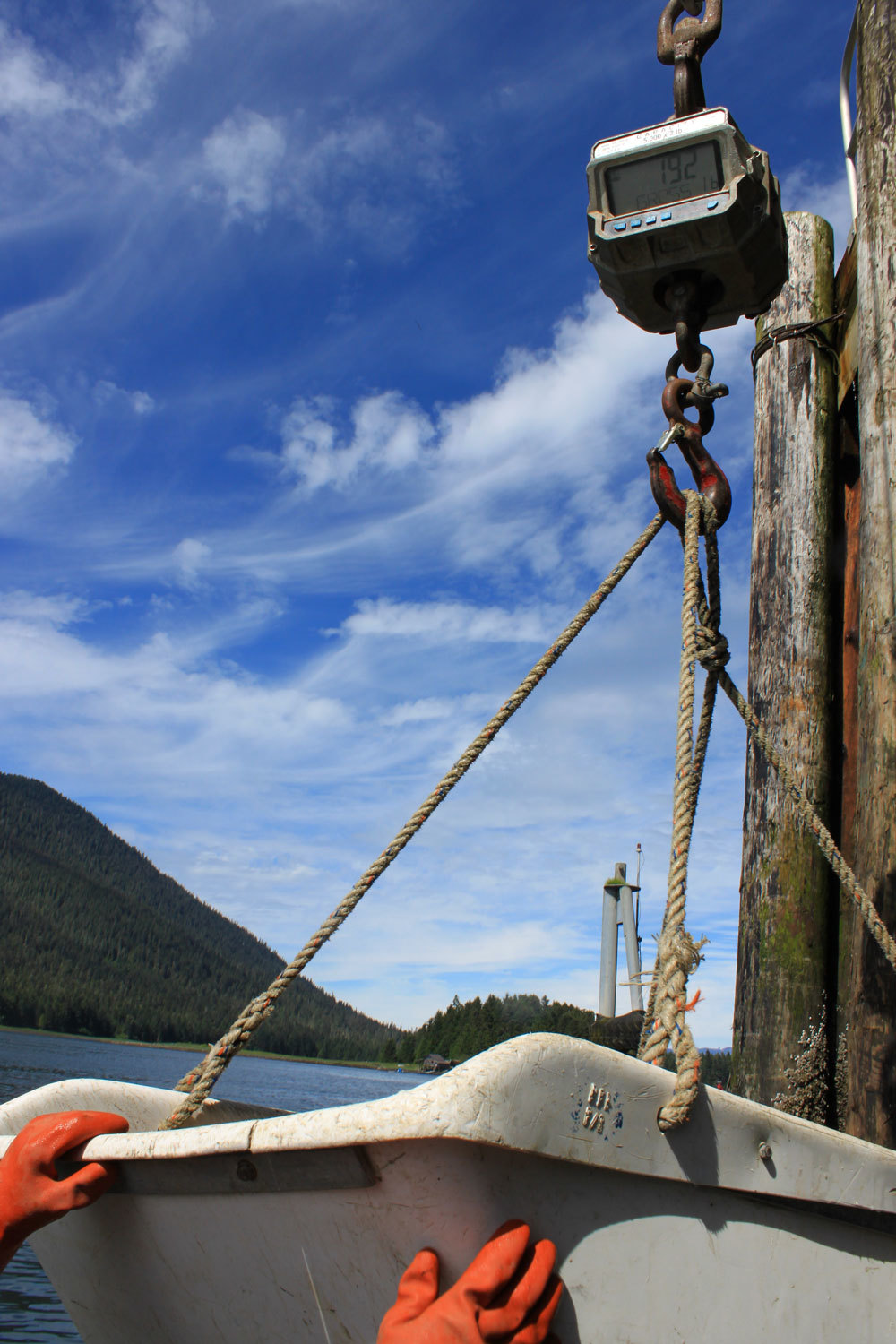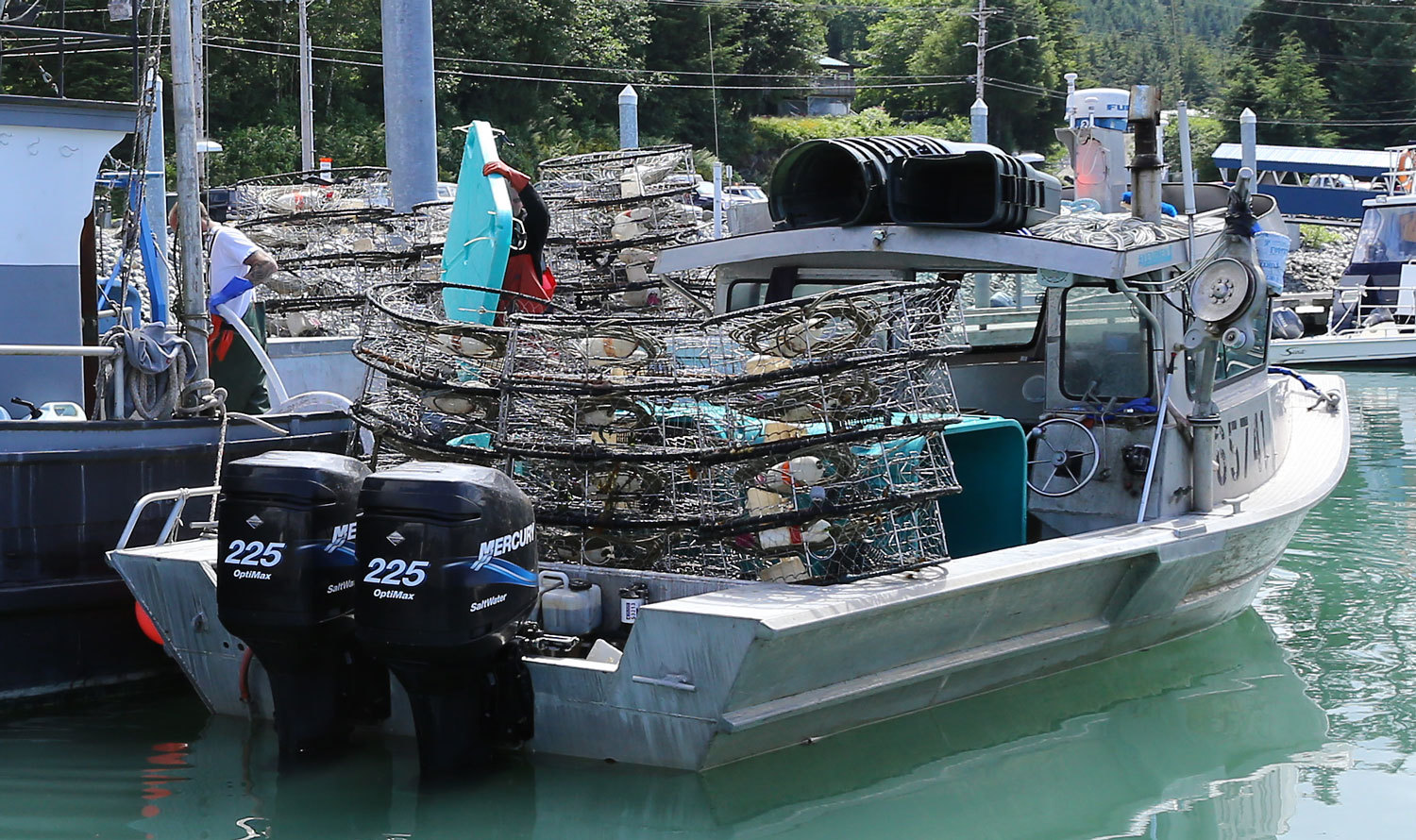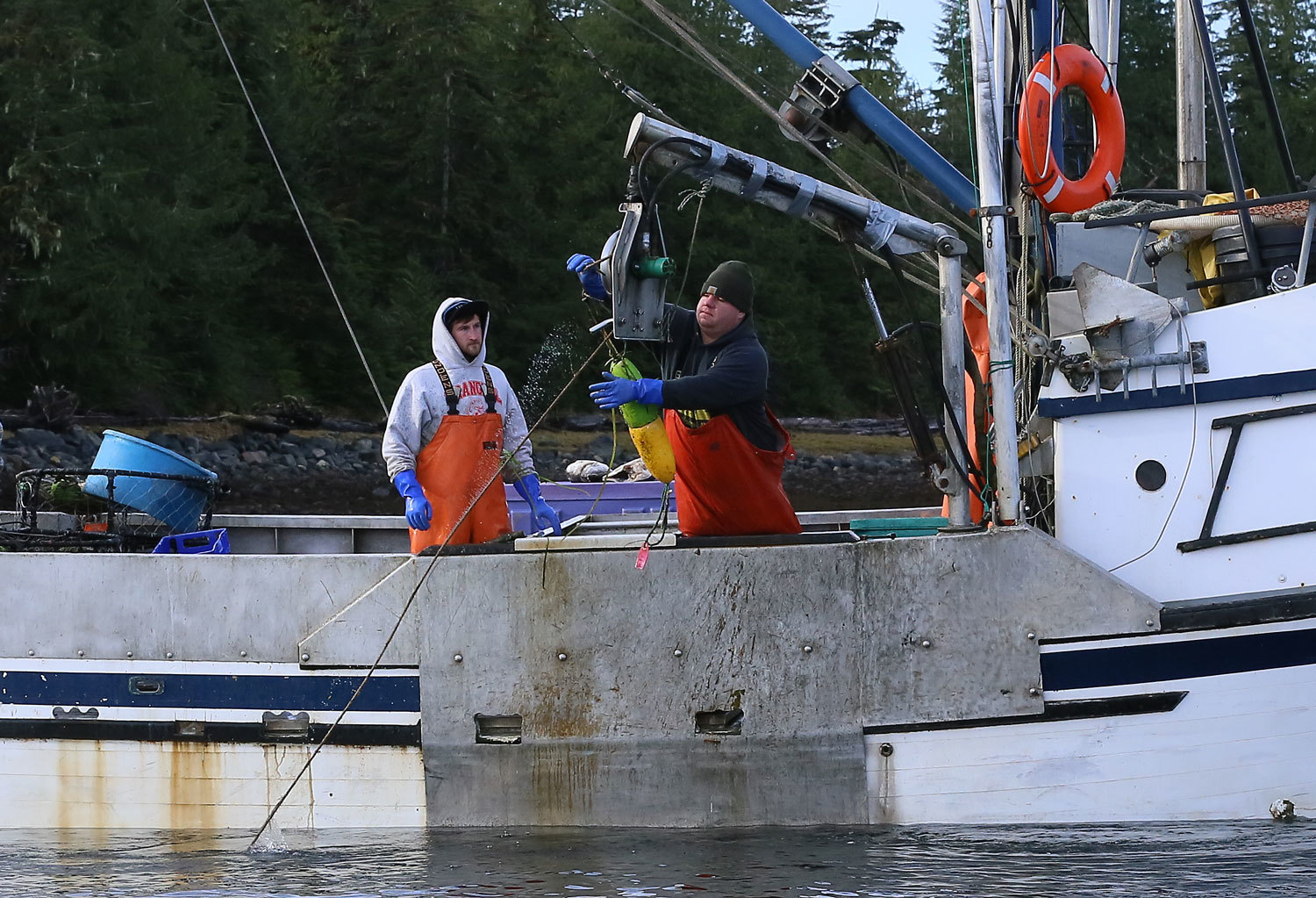A Peek at Commercial Dungeness Crabbing
/Fishermen in Southeast Alaska rarely make their living on one fishery. Over the years most fishermen (a title that includes women) have bought into multiple fisheries in order to string together a successful season.
There are quotas, limits, openers, closures, areas, boundaries, gear restrictions, and a crazy labyrinth of regulations. All of that is in the interest of maintaining harvests of Alaskan seafood in perpetuity.
A fisherman might salmon fish in summer, Dungeness crab in the fall, and shrimp in winter, leaving a few spring months to do maintenance on the boat and gear.

Cindy telling me to hurry up and take the picture before she drifts into the dock.
The following is a tiny part of how Dungeness crab get from the ocean to your grocery store.
We'll start with Cindy. A few years ago crabbing was a supplement to longlining and tendering for her. She crabbed in her small boat.
Her big boat is for longlining and salmon tendering.

Here's a little of one sunny day when she checked her pots.

Dungeness crab pot coming up with lots of kelp and some crab. Cindy coils the line carefully so that the pot will reset without tangles.

Pulling crab out of the pot before re-baiting it and resetting it. The bait that she chopped up is on the right side of the table.
A nice Dungeness crab that measures well above legal size.

Putting crab into a tote to be winched up to the seafood processor.

There is a scale showing the weight of the product.

Earlier this year the boats to the right were getting geared up for Dungeness crab. Pots that have been stored in gear sheds or in yards are loaded onto trucks, put onto the boats at the harbor lift station, and secured to take out on the fishing grounds. On small boats it can take multiple trips out to crab land just to get all of the pots set.
A few days ago we were in Zimovia Strait and saw the "Quad L" checking their string of crab pots. The weather was surprisingly calm and nice for November. It was in the upper 30's (about 3*c), with light winds.

The skipper brings the boat near a buoy, and the deckhand hooks it.
The line is brought up and around the block.

The deckhand coils line as the pot is brought in.
All female crab are released. Every male crab is measured. It is released if it is too small, or is put into circulating salt water in the hold if it is legal size. The crab must be alive and in good condition when they are sold to the seafood processor.
The bait cup is refilled and a large chunk of 'hanging bait' is added to the pot.
The pot is closed and reset.
One pot done, seventy-four to go. Actually I didn't ask them how many pots they are running. There are permits for 75, 225, or 300 pots. Each pot needs to be checked every few of days.
A tip of the hat to you hard working crabbers,
Alaska Beachcomber
More about dungeness crab: Cleaning Dungeness Crab
Great finds
- Casino Sites UK
- Best UK Non Gamstop Casinos
- Non Gamstop Casinos
- Non Gamstop Casinos
- UK Casinos Not On Gamstop
- Non Gamstop Casino
- Gambling Sites Not On Gamstop
- Non Gamstop Casino
- Non Gamstop Casino
- Non Gamstop Casino Sites UK
- UK Casino Not On Gamstop
- Meilleur Casino En Ligne
- Gambling Sites Not On Gamstop
- Best Casinos Not On Gamstop
- I Migliori Casino Non Aams
- Non Gamstop Casino Sites UK
- Casino Sites Not On Gamstop
- Non Gamstop Casino
- Casinos Not On Gamstop
- Slots Not On Gamstop
- Non Gamstop Casino Sites UK
- Casino Non Aams Sicuri
- Meilleur Casino En Ligne Fiable
- I Migliori Casino Online

